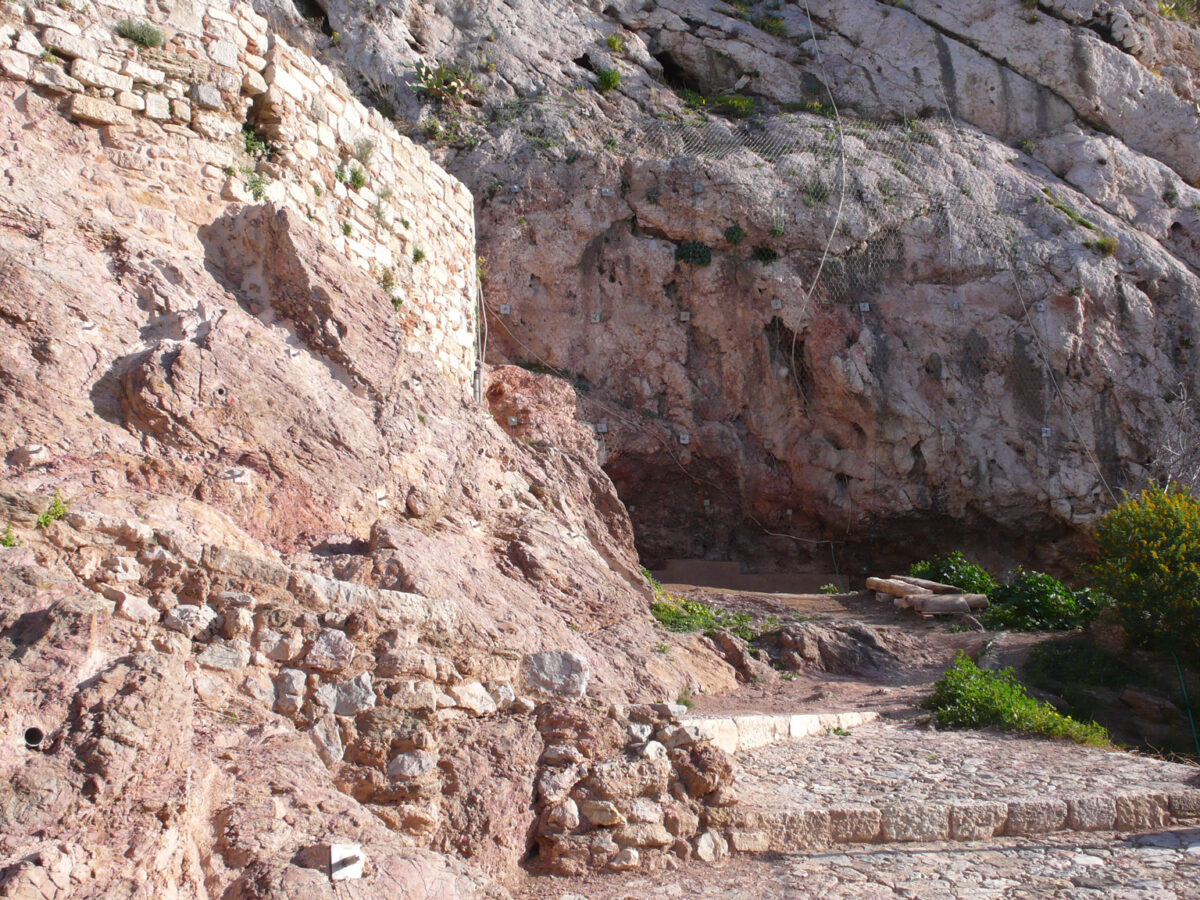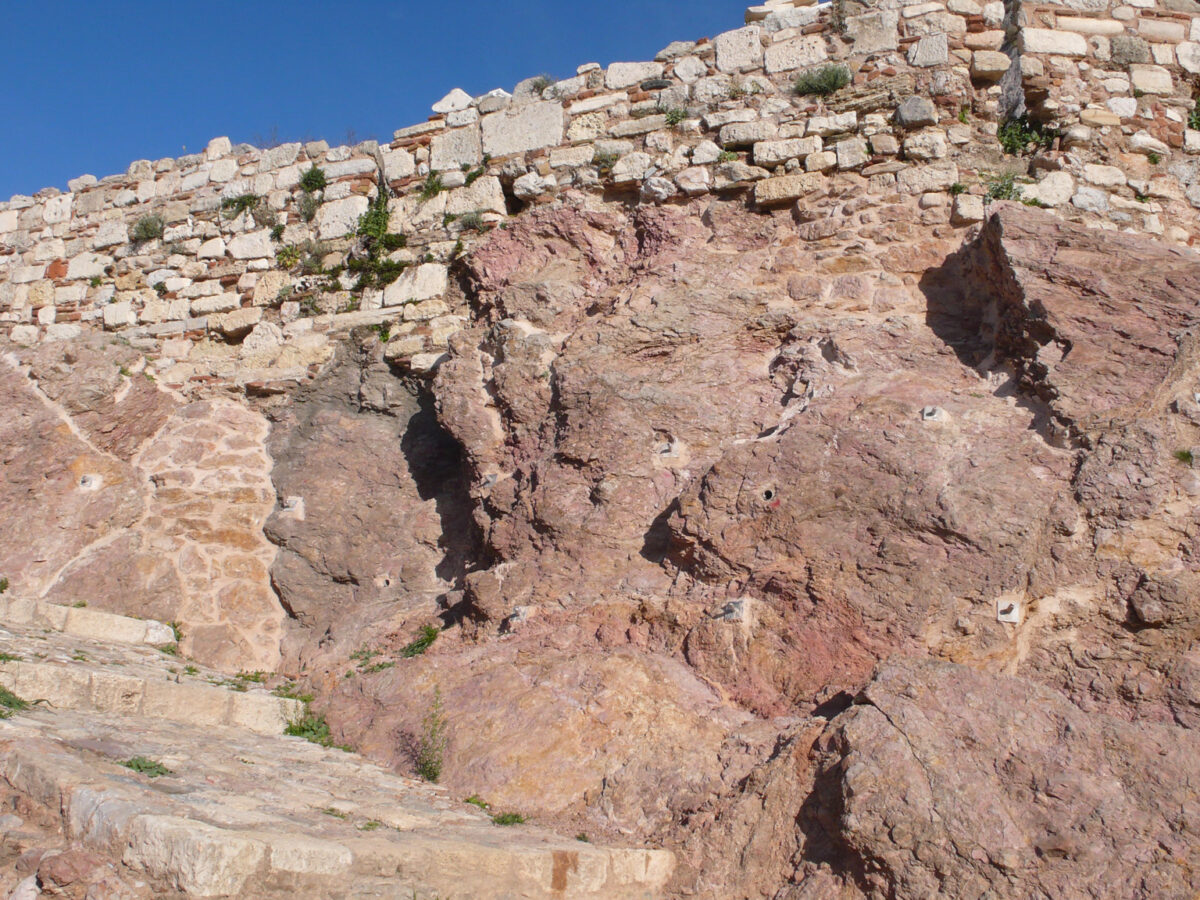
ESMA gave priority to works concerning the erosion and stability of the rocks surrounding the Acropolis. In the period between 1979 and 1993 the rocks in the slopes were consolidated at 22 areas around the hill. These works included anchoring under pressure unstable rocks to the mass of the rock using clamps and heads of stainless steel. The existing cracks were sealed and the gaps on the rocks were filled with grout of specially designed mortar. Thus, in the middle of the 90s the major problems of the rock had been addressed. In the following years works of lesser scale were conducted on the rock including the consolidation of the rocks in the south of the Athena Nike temple and on the southeast slope.
In early 2014, following heavy rainfall, a small part from an area of shale deposits on the southwest slope of the Acropolis rock was detached and collapsed. This incident, in combination with the increased rate of climate changes, brought to the fore the need for a new intervention programme in areas of the rock.
The commencement of the works on the Walls and the rock have expanded the range of the activities of ESMA and YSMA. Although the classical monuments, the Walls and the Acropolis rock constitute a single monumental complex, significant differences in the rock’s structure necessitate a different methodological approach and treatment.
So far, the following measures have been completed:
- Consolidation of the shale sections on the SW slope of the Acropolis rock and implementation of passive protection measures by placing a mesh in the area in question. The work was completed in 2016.
- Investigation of the structural adequacy of the rock on the north slope of the Acropolis on which the old elevator was installed. In the spring of 2020, following the approval of the study “Consolidation of the rocky substratum and a wall built by N. Balanos in the area of the elevator for people with disabilities on the Acropolis of Athens” funded by the Onassis Foundation and supervised by YSMA, the company “LITHODOMOS” carried out reinforcement works on a wall erected in the mid-1930s to support the new elevator. A total of 24 passive anchors, 25mm in diameter, were fixed and weep holes were opened.
- The “Geotechnical-structural study of the circuit Walls of the Athenian Acropolis and their rocky substratum in selected sites of immediate priority” was assigned and completed. In the study, prepared by PER Consultants Engineers SA, in partnership with DOMOS Consulting Engineers, a series of measures were put forth for the strengthening and fixing of selected parts of the rocky substratum.
The stabilization intervention in the rocky substratum in area II of the north slope has already been approved by ESMA, and is expected to be implemented in the immediate future. This area forms part of the rocky substratum of the B16 and B15 (classical postern) areas, including the west end of the B14 area. As part of this intervention, a series of works will be executed that include, among others, the removal of unsafe rocks, the installation of stainless-steel passive anchors and dowel bars, rock mass grouting, and the opening of drainage holes. The project “Consolidation of the rock masses and the Acropolis walls” has been incorporated into the Recovery and Resilience Facility.



